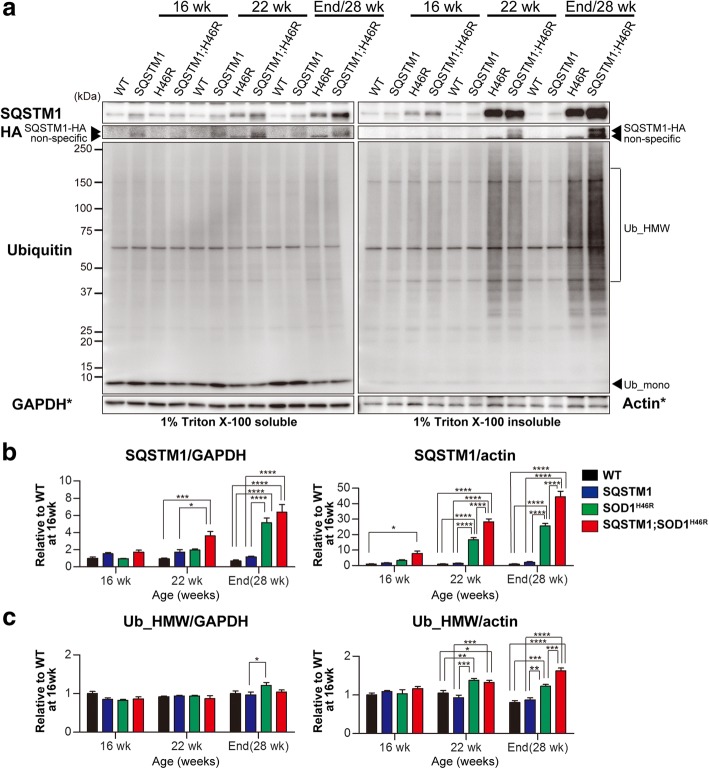Fig. 7.
Overexpression of SQSTM1 increases the insoluble poly-ubqiuitinated proteins in the spinal cord of SOD1H46R-expressing mice. a Western blot analysis of SQSTM1, SQSTM1-HA (HA) and Ubiquitin (Ub) in the spinal cord from wild-type (WT), SQSTM1 (SQSTM1), SOD1H46R (H46R), and SQSTM1;SOD1H46R (SQSTM1;H46R) mice at 16 weeks of age (wk), 22 wk., and end-stage (H46R and SQSTM1;H46R) or 28 wk. (WT and SQSTM1). Two fractions; 1% Triton X-100 soluble and 1% Triton X-100 insoluble/5%SDS soluble fractions were analyzed. SOD1_mono and SOD1_HMW represent monomeric and high molecular-weight forms of SOD1, respectively. Ub_mono and Ub_HMW represent monomeric ubiquitin and poly-ubiquitinated proteins, respectively. GAPDH and β-actin (Actin) were used for a loading control in Triton X-100-soluble and -insoluble fractions, respectively. Since the blots used in these western analyses were same as those in Fig. 6a, same images for GAPDH and Actin (asterisks) in Fig. 6a were used again as references. b Quantification of soluble and insoluble SQSTM1. c Quantification of soluble and insoluble poly-ubiquitinated proteins (Ub_HMW). b, c Values are mean ± s.e.m. (n = 4) in an arbitrary unit relative to WT mice at 16 weeks of age. Signal intensities were normalized by the levels of GAPDH (soluble fractions) and Actin (insoluble fractions). Statistical significance was evaluated by two-way ANOVA with Bonferroni’s post hoc test (comparisons between different genotypes in the same age; *p < 0.05, **p < 0.01, ***p < 0.001, ****p < 0.0001)

